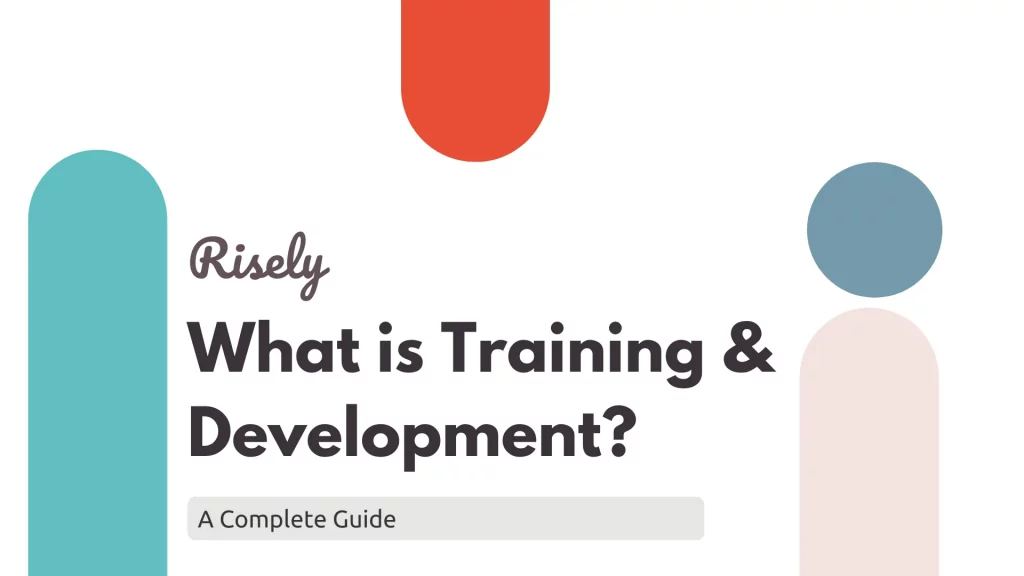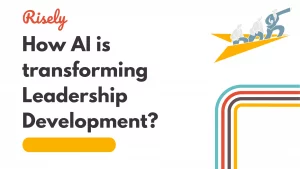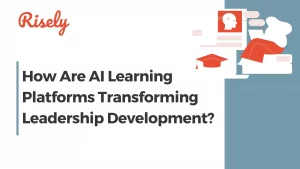What is Training and Development? A Complete Guide
Effective training and development constitutes an important core element that drives performance and growth in an organization. That kind of investment in the training of your team is not a checkbox on a list of things to be done; it is part of their career journey. By equipping employees with the skills and knowledge they need to succeed, you’re not only enhancing their job performance but also contributing to the overall success of your business. In this blog, we’re going to touch upon a few areas regarding what is training and development and discuss its importance, and the methods used in the process including the challenges you can face.What is Training and Development in HRM?
Training and development in your HR strategy are all about helping your team grow—both for the job they have today and the opportunities they’ll have tomorrow. Training focuses on building specific skills that your employees need right now, with hands-on practice that helps them excel in their roles. Development takes a broader view, preparing your team for future challenges. Through mentoring, coaching, and new learning opportunities, you’re setting them up to take on more responsibilities and grow in their careers. By focusing on both, you’re not just meeting immediate needs—you’re investing in their future and the success of your organization. It’s the part of learning and development that directly touches individual employees.Key Concepts and Definitions in Training and Development
Employee development is about more than just job training—it’s about helping your team unlock their full potential. It’s a process filled with diverse learning experiences that not only support their current roles but also prepare them for future opportunities. Soft skills play a key role in this growth. Whether it’s how your team communicates, collaborates, solves problems, or leads, these skills make a difference in every interaction. Strong soft skills set your employees up for success no matter what their role is. On-the-job training is all about mastering the specific skills and knowledge needed for their daily tasks. Whether through hands-on learning or structured programs, this training ensures your team can hit the ground running and excel at what they do. Compliance training is an important type of training intended to inform employees about the regulations, policies, and legal obligations of the organization. With this training, you ensure that your employees are aware of and follow the rules and regulations that apply to their workplace.Other Interesting Reads
Why is Training and Development Important?
Training and development for teams are not expenses but smart investments. Growth in the team is translated into higher performance, productivity, and engagement as well as motivation of the employees. As you put development first, you’re creating an atmosphere of constant learning that allows your business to move ahead of the curve and adjust well with changing trends in the business world. These will be more than new skills for your employees; they constitute career growth, increased job satisfaction, and a greater sense of accomplishment and fulfilment from the work. It’s a win-win for both your organization and your team.Boosting Employee Performance and Productivity
Employee training is key to boosting job performance. According to the research on The Importance of Training and Development in Employee Performance and Evaluation (Rodriguez J. and Walters K., 2017), training and development programs help individuals in learning the soft, functional, and technical skills necessary to perform their jobs. They achieve higher level of job satisfaction because they feel they are investing in their own future. Such tendencies increase their confidence, self-esteem, and job gratification. Training and development enhances the overall performance of individuals. When your team gets the right development, they become better problem-solvers and decision-makers, which leads to increased productivity. Plus, they feel more confident and capable in their roles, helping them stay motivated and engaged. Investing in training not only benefits your employees but also creates a culture of continuous learning within your organization. When you help your team reach their full potential, you’re setting your business up for growth and long-term success.Facilitating Organizational Growth and Adaptability
Staying ahead means being flexible, and that’s where training and development come in. By helping your team grow and adapt, you’re giving them the skills they need to handle change and grab new opportunities—setting both them and your business up for success. When you invest in training that aligns with your company goals, it keeps your team sharp and ready for whatever comes next. Whether it’s embracing new tech, building leadership across the board, or sparking fresh ideas, you’re helping your company stay competitive and ready for anything the market throws your way.Enhancing Employee Engagement and Retention
Employee engagement and retention are crucial to a company’s success. When your team feels engaged, they work harder, stay committed, and are less likely to leave. Offering training and development shows that you care about their growth, boosting both their engagement and loyalty. When employees feel valued and supported, job satisfaction increases, and they become more loyal. Providing opportunities for skill development not only makes work more fulfilling but also reduces turnover. By investing in their growth, you’re creating a positive work environment where people feel challenged, appreciated, and motivated to stay.Cultivating a Positive Organizational Culture
Training and development has a big impact on your company’s culture. When you invest in your team’s learning, you create an environment that values growth, encouraging creativity and adaptability. By supporting their development, you’re not just building skills—you’re fostering collaboration and a positive, inclusive atmosphere. This investment shows your team that you care, boosting morale, loyalty, and making your company a place where people want to stay and grow. It’s a powerful way to attract top talent and keep innovation flowing. Read further: Why Training and Development is Important for Teams?Modern Training and Development Methods
The world of training and development is rapidly changing, especially due to new technologies and better knowledge of how adults learn best. Learning today in the workplace has to be engaging, flexible, and personalized to suit diverse needs. Fortunately, the options for training have really widened today. From direct experience in a job to tech-driven learning and workshops into essential soft skills, there’s something out there for everyone. With the wide array of tools you can utilize, you can work on crafting compelling learning experiences that cross over many styles and preferences to make it enjoyable and impactful for your team.On-the-Job Training Techniques
On-the-job training (OJT) is a game changer for effective development programs. It gives your team the chance to gain practical experience, letting them apply new skills in real-world situations. With the guidance of experienced coworkers or supervisors, trainees receive valuable feedback as they navigate their learning journey. There are many exciting ways to approach On-the-job training. For instance, job shadowing allows trainees to observe skilled workers in action, while job rotation lets them explore different roles across departments. Apprenticeships combine classroom learning with paid hands-on experience, all under the mentorship of seasoned professionals. To make OJT truly impactful, it’s essential to provide clear instructions, set realistic goals, and create a welcoming space where trainees feel comfortable asking questions. When OJT is done right, it not only equips your team with the skills they need but also fosters a culture of continuous learning that benefits everyone.Technology-Enabled Learning Solutions
Technological advancements have completely changed the way we approach training and development, offering a variety of tech-enabled learning options. E-learning platforms, learning management systems (LMS), virtual classrooms, and AI have become essential tools in our training programs. Features like Risely’s Merlin, an AI Leadership Coach, have become popular among L&D professionals as they are accessible, flexible, and cost-effective. Your team can learn at their own pace, anytime and anywhere they have internet access, making it super convenient to train employees across different locations. Plus, many of these platforms come packed with fun features like simulations, gamification, and social learning that make the experience more engaging and enjoyable. As technology keeps evolving, we can look forward to even more innovative solutions that will continue to enhance how we learn and grow together.Soft Skills Development through Workshops
Soft skills have become more important than ever. Soft skills training focuses on enhancing interpersonal abilities like communication, teamwork, problem-solving, and leadership. Workshops provide an excellent platform for learning these skills. In workshops, your team gets to practice through role-playing and group activities. Your team will receive valuable feedback from peers, allowing them to identify their strengths and areas for growth in a supportive environment. Great soft skills workshops are engaging and customized to meet the group’s needs. They often incorporate case studies and real-life examples, making learning not just relevant but truly impactful for one’s everyday work.The Role of Mentoring and Coaching
Mentoring and coaching are powerful tools that you can use to enhance your team’s growth. In mentoring, you can connect less experienced team members with seasoned professionals who provide guidance, support, and advice, assisting them in navigating their career paths. Coaching offers a more structured approach, focusing on setting and achieving specific goals. As a coach, you can work with your team members to create actionable plans and tackle challenges, ensuring they stay accountable for their progress. By integrating mentoring and coaching into your training programs, you can provide personalized support that accelerates skill development. This approach not only helps your team learn more effectively but also empowers them to apply their new skills in the workplace more quickly.What are the Most Common Challenges in Training and Development?
Implementing effective training and development programs can be challenging for you as an HR or L&D professional, with obstacles like tight budgets, and employee resistance. Let’s look at some of the most common challenges, their impact on L&D initiatives, and strategic solutions:1. Limited Engagement in Training Programs
When employees don’t see value or relevance in training, engagement tends to decline, reducing the overall effectiveness of programs. You may find this discouraging because it is more difficult to demonstrate the impact of your work when there is minimal engagement.- Solution: Design training sessions that are highly relevant and aligned with your team’s roles and growth objectives. Regularly gather feedback to adjust content and delivery, making training more appealing and impactful for your team.
2. Tight Budgets and Limited Resources
Budget constraints often lead to difficult decisions regarding which programs to prioritize. It can be challenging to maintain training programs that are thorough, interesting, and up-to-date if you lack the necessary resources.- Solution: Prioritize scalable, cost-effective options like virtual training or digital learning platforms that reach a broader audience. Look for tools that allow for flexibility and customization, providing extensive learning without extensive costs.
3. Measuring Training Impact
It is challenging to quantify training outcomes, especially with soft skills, making it harder to demonstrate the program’s value and secure future funding.- Solution: Establish clear, measurable goals and track progress using relevant KPIs. Use follow-up assessments and employee feedback to gauge skill growth and training relevance, providing tangible proof of the program’s success.
4. Employee Resistance to Training
Employees sometimes resist training due to time constraints, lack of interest, or unclear benefits weakening your organization’s learning culture.- Solution: Effectively communicate the benefits of training, linking it to your employees’ career growth. Use microlearning sessions that don’t disrupt the workflow and focus more on identifying and addressing skill gaps.
Conclusion
In conclusion, what is training and development in HRM is a very important question that needs to be addressed in every organization. They help improve employee performance, support organizational growth, and create a positive work culture. New methods, like technology-based learning and mentoring, are great for effective skill building. Even though there are challenges, it is vital to measure the impact of these programs. By focusing on employee development, organizations can stay competitive and adapt to the changing business world.Avantika holds an undergrad degree in Political Science and Psychology, bringing a unique blend of analytical and psychological insight to her writing. With extensive experience in content creation and research, she crafts engaging and well-informed content that resonates with readers and drives meaningful conversations.
Want to train your team but unsure how to?
Grab a free copy of Risely’s training and development plan template and get started on your journey toward growth.
How to Build a Leadership Journey? ft. Thomas Ulbrich
Effective leadership doesn’t always begin with a grand vision. Sometimes, it takes root in the courage to take the first…
AI and Leadership Development: Driving Synergy for Growth
Sneha MishraApr 14, 2025
AI and Leadership Development: Driving Synergy for Growth You know the frustration all too well. Your organization invests thousands in…
How Are AI Learning Platforms Transforming Leadership Development?
Sneha MishraApr 8, 2025
As an L&D leader, you’re likely familiar with this frustrating reality: 82% of organizations consider leadership development critical(1), yet only…
5 Essential AI Skills for L&D Leaders
Sneha MishraMar 31, 2025
5 Essential AI Skills for L&D Leaders According to LinkedIn’s 2025 Workplace Learning Report(1), 71% of L&D professionals are now…
How to Create a Course with AI: A Guide for L&D Professionals
Sneha MishraMar 20, 2025
How to Create a Course with AI: A Guide for L&D Professionals According to a McKinsey survey(1), only 11% of…







